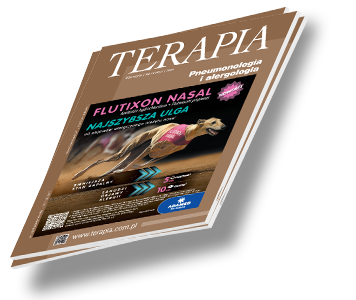Pediatria Terapia 2021, 3 ( 398 ) : 32 - 42
Leczenie biologiczne astmy ciężkiej u dzieci
Biologic therapy of severe asthma in children
Astma jest jedną z najczęstszych chorób przewlekłych występujących w populacji dziecięcej, w Polsce dotyka aż 11% osób poniżej 18. r.ż. Jest to wysoce heterogenna choroba, charakteryzująca się przewlekłym stanem zapalnym dróg oddechowych z okresową obturacją oraz objawiająca m.in. świszczącym oddechem, uczuciem duszności i ucisku w klatce piersiowej oraz kaszlem (1). Rozpoznanie astmy stawiane jest głównie na podstawie objawów klinicznych oraz potwierdzenia zmiennej obturacji w badaniach czynnościowych układu oddechowego u dzieci powyżej 6. r.ż. W grupie poniżej 5. r.ż. postawienie rozpoznania astmy może być wyzwaniem nawet dla doświadczonego klinicysty, dlatego tak istotny jest wynik próby terapeutycznej z glikokortykosteroidami wziewnymi (wGKS) (poprawa po leczeniu) oraz wykluczenie innych przyczyn obturacji oskrzeli (2).

Zaloguj się i przeczytaj bezpłatnie całą treść artykułu.
Nie masz jeszcze konta dostępowego?
Zarejestruj się bezpłatnie, a otrzymasz:
* dostęp do wszystkich doniesień oraz pełnych tekstów artykułów naukowych w naszej Czytelni,
* prawo do bezpłatnego otrzymywania newslettera "Aktualności TERAPIA" z przeglądem interesujących i przydatnych wiadomości ze świata medycyny oraz systemu ochrony zdrowia w Polsce i na świecie,
* możliwość komentowania bieżących wydarzeń oraz udziału w ciekawych quizach i konkursach.
Zapraszamy serdecznie, dołącz do naszej społeczności.



Dodaj komentarz